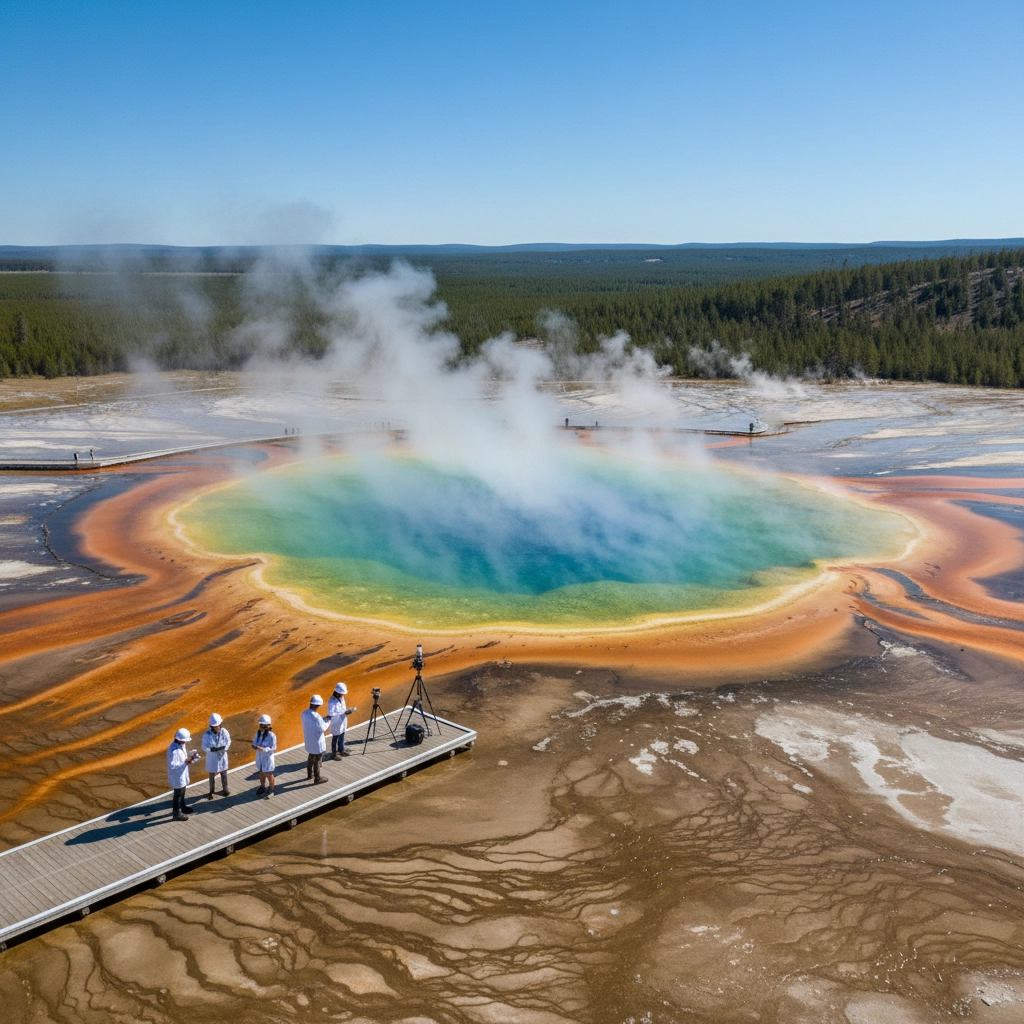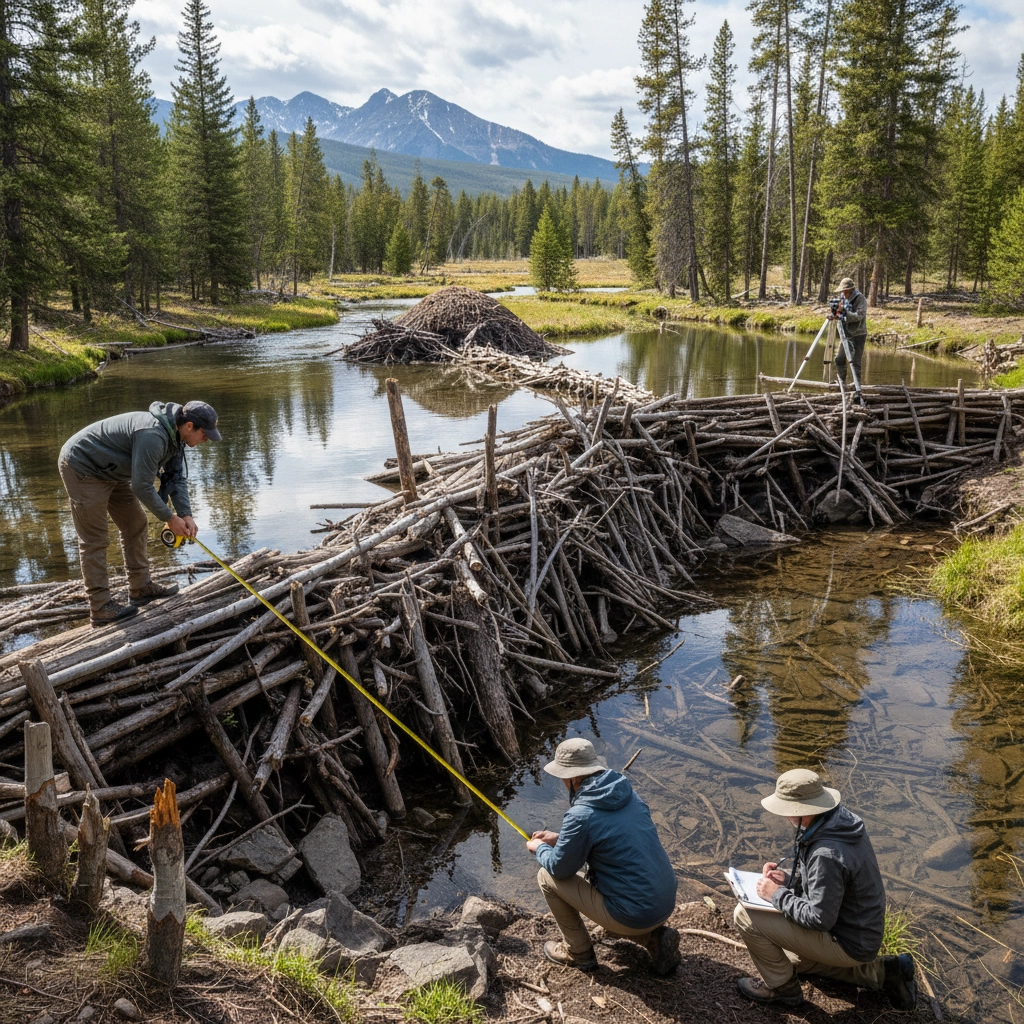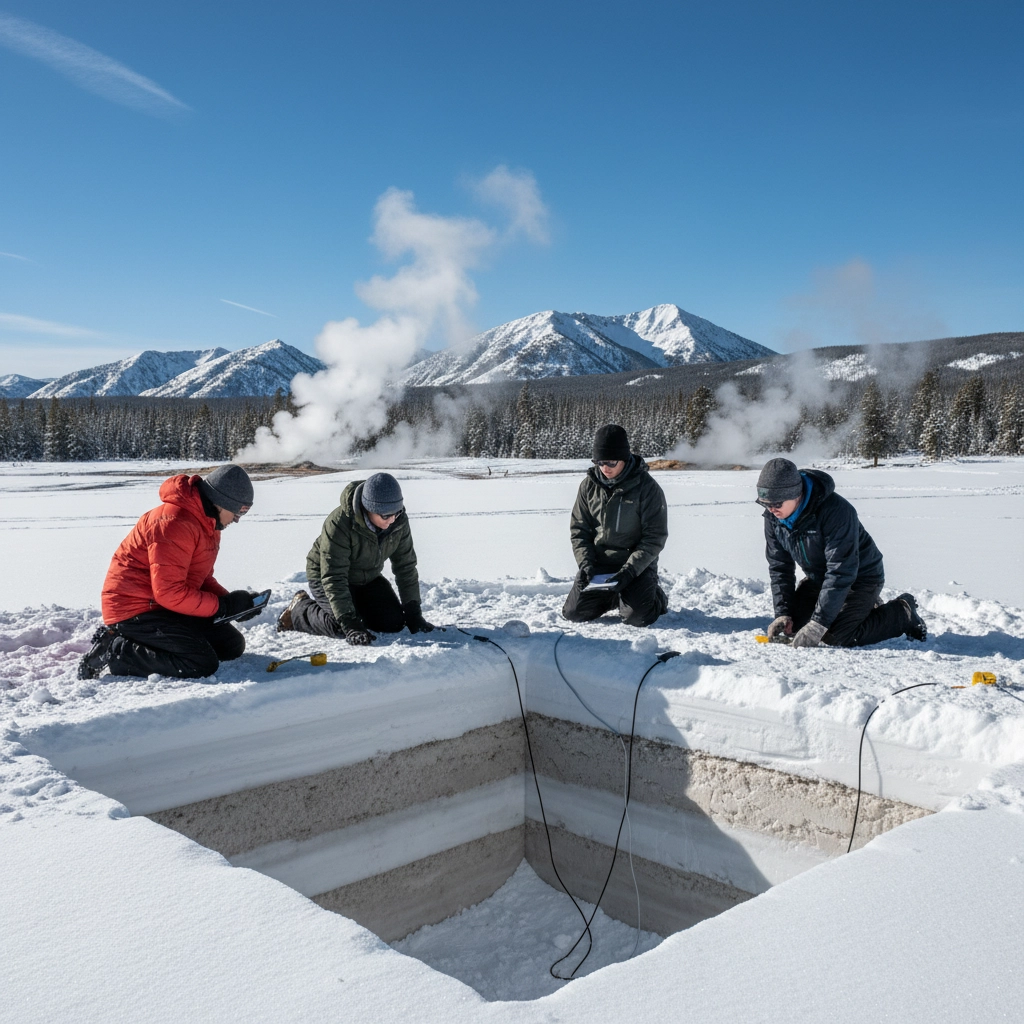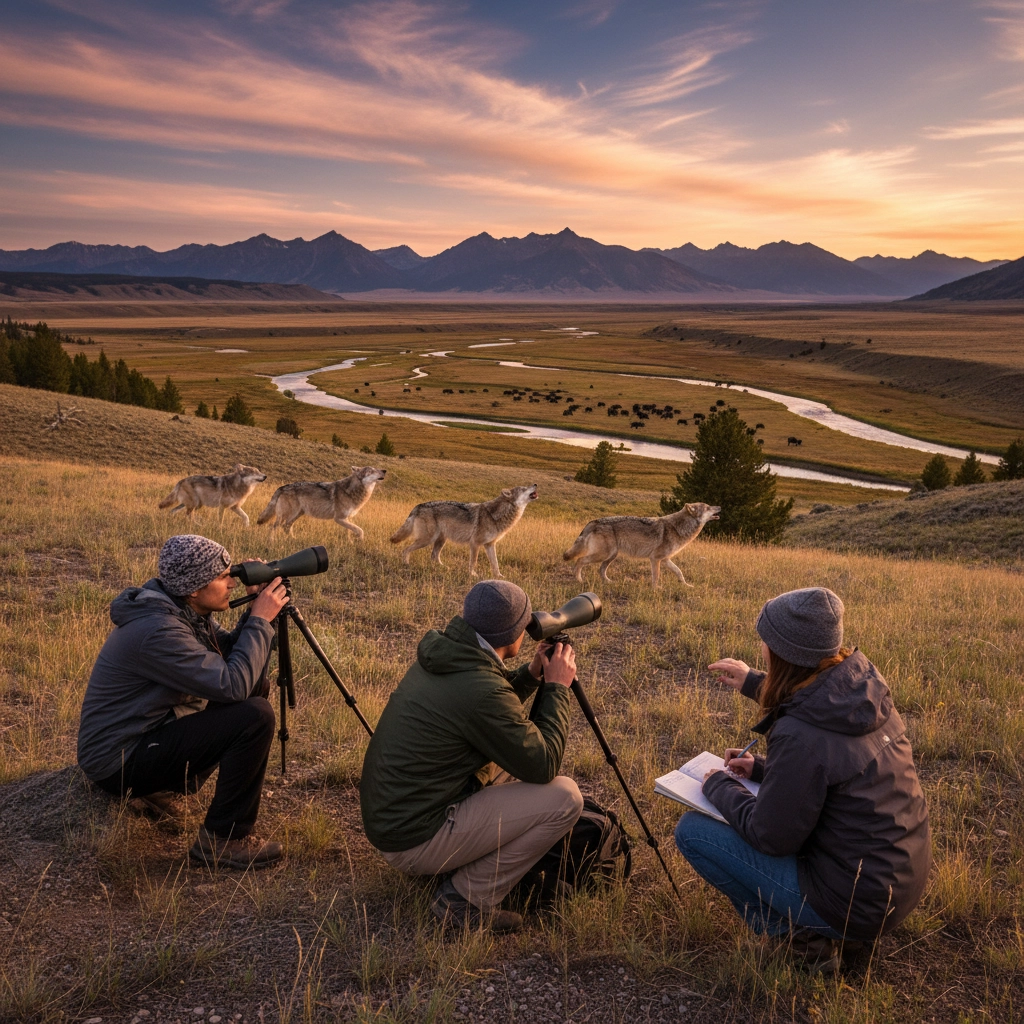Beyond Old Faithful: Hidden Yellowstone Habitats Explored with Appleseed Expeditions
- Caleb Mullenix
- Oct 22
- 5 min read

Ensuring comprehensive educational experiences for students visiting Yellowstone National Park requires ventures far beyond the iconic Old Faithful geyser. While this famous thermal feature captures attention, the park's true educational value lies within its diverse microhabitats and lesser-known ecosystems that offer unparalleled learning opportunities for student groups.
Appleseed Expeditions has designed specialized itineraries that immerse students in Yellowstone's hidden scientific treasures, creating authentic field research experiences that directly connect to classroom curricula. These carefully curated expeditions prioritize hands-on learning while maintaining the highest safety standards for educational travel.
Thermophile Research at Grand Prismatic and Hidden Hot Springs
Begin your students' scientific journey with thermophile microorganism studies at Grand Prismatic Spring, Yellowstone's largest hot spring and one of the most scientifically significant thermal features in the world. This extraordinary habitat supports extremophile bacteria that thrive in temperatures exceeding 160°F, creating the spectacular rainbow bands of color that make this spring visually striking.

Appleseed Expeditions guides facilitate student observations of bacterial mat formations, temperature gradients, and pH variations across different zones of the spring. Students collect data on color changes that correspond to specific bacterial communities, learning how these microorganisms have adapted to extreme conditions that would be lethal to most life forms.
Advance beyond the crowded boardwalks to explore lesser-visited thermal features where students can conduct more detailed scientific observations. These locations provide opportunities for water temperature measurements, pH testing, and detailed documentation of microbial communities without the distractions of large tourist crowds.
Classroom Integration: Prepare students with pre-trip lessons on extremophiles, bacterial classification, and astrobiology connections. Post-trip activities include creating bacterial mat diagrams, comparing Yellowstone thermal features to similar environments on other planets, and presenting findings to younger students or community members.
Alpine Meadow Ecosystems and High-Elevation Studies
Ascend to Yellowstone's alpine meadows where students encounter entirely different ecological communities adapted to harsh high-elevation conditions. These fragile ecosystems support specialized plant communities, including rare wildflowers and hardy grasses that survive short growing seasons and extreme temperature fluctuations.
Document plant adaptation strategies such as cushion growth forms, waxy leaf coatings, and specialized root systems designed for thin soils and intense UV radiation. Students measure temperature differences between ground level and air temperature, understanding how microclimate variations affect plant distribution patterns.
Encourage students to observe pollinator relationships in these high-elevation environments, noting how flower timing and insect activity must synchronize within compressed growing seasons. These observations connect directly to climate change studies and ecosystem resilience concepts.
Field Activities: Establish permanent monitoring plots for annual wildflower counts, document soil temperature variations at different elevations, and create detailed botanical sketches with scientific annotations. Students practice using GPS units to mark research locations and learn proper techniques for non-invasive ecosystem monitoring.
Beaver Wetland Habitats and Ecosystem Engineering
Explore Yellowstone's extensive beaver wetland systems where students witness ecosystem engineering in action. These areas demonstrate how individual species can dramatically transform entire landscapes, creating habitat diversity that supports numerous other wildlife species.

Observe dam construction techniques, water level management, and the cascading effects of beaver activity on plant communities, water chemistry, and wildlife populations. Students document evidence of beaver presence through track casting, scat analysis, and vegetation surveys that reveal feeding preferences and habitat modifications.
Measure water pH, dissolved oxygen levels, and temperature differences between beaver ponds and adjacent stream systems. These measurements help students understand how beaver engineering creates diverse aquatic microhabitats that support different fish and invertebrate communities.
Research Projects: Create detailed maps showing dam locations and their effects on water flow patterns. Students can analyze satellite imagery to track beaver pond development over multiple years, connecting their observations to long-term ecological monitoring practices used by professional researchers.
Winter Ecology and Snow Science Investigations
Embrace Yellowstone's winter environment through specialized snow science expeditions that reveal hidden ecological processes occurring beneath the snow pack. Winter visits provide unique opportunities to study animal adaptation strategies, plant survival mechanisms, and the crucial role of snow in ecosystem functioning.
Conduct snow pit excavations to examine layer formation, density variations, and temperature profiles that affect both plant survival and animal movement patterns. Students learn to identify animal tracks in snow, document feeding sign, and understand how different species have adapted to survive harsh winter conditions.

Investigate thermal features that remain active during winter months, observing how geothermal heat creates unique microclimates that support plant growth and provide wildlife refuge areas. These observations help students understand ecosystem complexity and the importance of habitat diversity for species survival.
Winter Research Activities: Establish snow depth monitoring stations, document animal movement corridors through snow-covered landscapes, and compare plant survival strategies in areas with different snow accumulation patterns. Students create detailed weather journals and connect their observations to broader climate patterns affecting the Greater Yellowstone Ecosystem.
Hidden Geothermal Features and Backcountry Exploration
Venture beyond crowded geyser basins to explore lesser-known thermal features that provide intimate scientific study opportunities. These locations allow for detailed temperature measurements, mineral deposit analysis, and undisturbed observation of thermal feature behavior patterns.
Document different types of thermal features including hot springs, fumaroles, mud pots, and small geysers that exhibit unique characteristics. Students practice scientific observation techniques by creating detailed sketches, recording eruption intervals, and measuring temperature gradients around thermal features.
Study mineral deposition patterns and rock alteration processes that occur around geothermal features. These observations connect to chemistry and geology curricula while demonstrating ongoing geological processes that continue shaping Yellowstone's landscape.
Scientific Documentation: Establish thermal feature monitoring protocols that can be repeated during future visits. Students create comprehensive field guides documenting the location, characteristics, and behavior patterns of lesser-known thermal features for use by future student groups.
Wildlife Corridor Studies and Predator-Prey Relationships
Explore Yellowstone's wildlife corridors through strategic positioning in areas like Hayden Valley and Lamar Valley where students can observe complex predator-prey interactions and seasonal migration patterns. These locations provide opportunities for long-term behavioral observations and data collection on wildlife population dynamics.

Conduct systematic wildlife surveys using spotting scopes and field identification guides. Students learn proper techniques for wildlife observation that minimize disturbance while maximizing learning opportunities. Document feeding behaviors, social interactions, and habitat preferences for different species.
Study the ecological impact of wolf reintroduction through careful observation of prey species behavior, vegetation recovery patterns, and overall ecosystem changes. These observations connect to conservation biology concepts and demonstrate how single species can have landscape-level effects.
Research Applications: Create detailed wildlife behavior logs, map animal movement patterns using GPS coordinates, and analyze data to identify trends in animal activity related to weather patterns, seasonal changes, and human presence. Students practice scientific data analysis techniques while contributing to ongoing wildlife research efforts.
Classroom Integration and Extended Learning Applications
Transform field observations into comprehensive educational experiences through carefully designed pre-trip preparation and post-trip analysis activities. Establish clear learning objectives that connect field experiences to specific curriculum standards in biology, chemistry, earth science, and environmental studies.
Create detailed lesson plan sequences that build anticipation for field experiences while providing necessary background knowledge. Include vocabulary development, scientific method review, and data collection technique practice sessions that prepare students for successful field research.
Design post-trip reflection activities that help students synthesize their observations and connect field experiences to broader scientific concepts. Encourage students to create presentations, scientific reports, or community education materials that share their findings with others.
Assessment Strategies: Develop rubrics for field notebook evaluation, scientific presentation assessment, and data analysis projects. Create opportunities for students to peer-review each other's work and practice scientific communication skills through formal presentation opportunities.
Appleseed Expeditions ensures that every Yellowstone experience extends far beyond tourist attractions to create authentic scientific research opportunities. These carefully designed expeditions help students develop scientific thinking skills, environmental awareness, and appreciation for ecosystem complexity while maintaining rigorous safety protocols and educational standards.
Prepare your students for transformative learning experiences that will enhance their scientific understanding while creating lasting memories of one of America's most remarkable natural laboratories. Contact Appleseed Expeditions to design a customized Yellowstone expedition that meets your specific educational objectives and curriculum requirements.



Comments